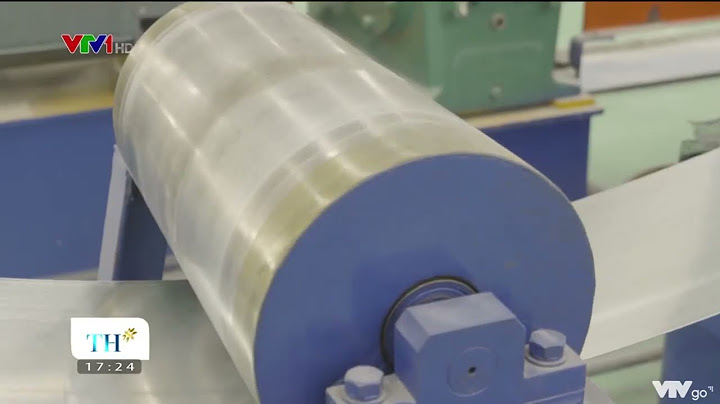Since the release of the Galaxy S8 and S8+ (which we reviewed here), every other smartphone brands out there has been latching onto the latest trend – longer screen. Though, instead of following Samsung’s aspect ratio of 18.5:9, other smartphones opted for an 18:9 aspect ratio, which is empirically 2:1, also known as “FullView display” now. ASUS opted for more than just having a 2:1 screen for the ZenFone Max Plus (M1). Show
Let’s dive into what the ASUS ZenFone Max Plus (M1) offers differently compared to other smartphones out there. UnboxingFor all I can say, the box of the ZenFone Max Plus (M1) is pretty simple yet inviting enough for appear as friendly. Following the ZenFone 4 Selfie Pro’s packaging design, the ZenFone Max Plus (M1) comes with a sleeve, too.  With everything laid out, we can see that the the ZenFone Max Plus (M1) comes with everything that you come to expect. Earphones, charger, cable, and even an OTG cable for reverse charging. Again, it’s in sync with the Max lineup of smartphones that ASUS have produced thus far. [nextpage title=”Design”]Here’s where the ASUS ZenFone Max Plus (M1) takes a departure from its usual design. Ever since the release of the Samsung Galaxy S8 and S8+ from March last year, every other smartphone manufacturer has been opting for the new, longer aspect ratio screen. To make this switch, a few things need to happen.  Firstly, the replacement of physical or capacitive buttons at the front with on-screen buttons. Secondly, sensors will have to be squished either to the top or bottom of the screen, Most probably, all sensors are squished at the top and the chin and the bottom of the screen is minimal. Thirdly, the fingerprint scanner has to be placed at the rear.  The ZenFone Max Plus (M1) ticks all these boxes and its design is looking pretty decent. The back of the phone is reminiscent of the ZenFone 4 Max Pro and the ZenFone 3 Zoom that we reviewed here previously, except for the rounded fingerprint sensor.  Without the included TPU case.  With the included TPU case. All of the buttons are still placed at the same position – on the right side of the phone. The volume rocker is at the top, whereas the power button is below the said volume rocker. The phone is pretty rounded at all sides, making it extremely comfortable to hold. The included TPU case has this little grains that protrude outwards – this is to minimize the contact area between the case and the back of the device to minimize scratches.   [nextpage title=”Connectivity & Speaker”]As for its connectivity, the ZenFone Max Plus (M1) is pretty similar to what is offered by the ZenFone 4 Max Pro. It still supports up to 802.11n WiFi, does not have FM radio support, and no NFC. However, I was pleasantly surprised that ASUS remade the SIM tray slot since the release of the ZenFone 4 Max Pro. It now has a much shorter but wider tray that still houses two nano SIM cards and a microSD card together.  I’ve praised the ZenFone 4 Max Pro for having dedicated card slots, and the ZenFone Max Plus (M1) now has dedicated card slots again – but without the awkward-looking long tray. At the bottom of the phone is where the microUSB port is found. Flanking the microUSB port is where the microphone and loudspeaker are found. One minor complaint here is the quality of the loudspeaker. It’s just… not as good as other smartphones – not even the ZenFone 4 Max Pro. Music played from Spotify just sound entirely different. It only has high-pitched sound and lacks any sort of lower frequency response. It also sounds like the equalizer is everchanging, making the sound produced unnatural. If it’s indeed an equalizer issue, an OTA update for the ZenFone Max Plus (M1) can mitigate this issue. [nextpage title=”Display”]Let’s talk about the ZenFone Max Plus (M1)’s FullView display. Once again it’s with an 18:9 aspect ratio (empirically 2:1), so there is quite a lot more screen area to play around with.  The ZenFone Max Plus (M1) has a 5.7-inch IPS LCD display with 720p resolution – that means 1440×720 pixels. It’s certainly acceptable for a smartphone of this price to have such a resolution, yet it’s already a bonus to have a 2:1 screen.  The phone feels comfortable to hold thanks to its rounded sides and edges and a much larger rounded fingerprint scanner at the back, making my hand grip much more comfortable. The chins are much smaller than before, and all capacitive buttons have been moved to on-screen.  The screen on the ZenFone Max Plus (M1) is surprisingly good, with great color reproduction. It can get really bright if you want it to, so there is no issues in using the Max Plus (M1) in bright daylight. [nextpage title=”Camera”]Like what was stated earlier, the ZenFone Max Plus (M1) does indeed have a similar back as the ZenFone 4 Max Pro – that means they both have dual-cameras too.  The ZenFone Max Plus (M1) comes with a similar setup of dual-cameras as its cousin – sporting a hybrid lens dual-camera system. One lens is the usual lens, whereas the second one is a wide-angle lens. The type of dual-camera setup used can actually be physically seen and determined. Learn more about dual-camera setups here  The specs are listed as below:
As for the picture quality, take a look at them below. The full resolution of all pictures taken can be seen at our Flickr album here. Rear-cameraFor all I can say, the camera is actually quite decent. The 16MP sensor does a fairly good job, and with a proper manual mode, it can capture some great shots. The ISO can go as low as 100, but it’s still rather noisy when viewed at full crop. The white balance tends to sway a little towards the warmer side, as everything is slightly tinted in soft peach hue – but it seems to only affect outdoor shots. The 8MP wide-angle lens is indeed very wide – but that comes at a price. The wide-angle lens does not have autofocus. The perfect use case is when the taking photos of sceneries, as its focus will be at infinity. However, it appears that the wide-angle lens have a strong blue tint on all pictures taken. This blue tint also appears to only affect outdoor shots.           Pictures from manual mode seems okay, too.  ISO 100, 1/250 shutter speed at f/2.0. Selfie cameraWhile I’m not a fan of selfie, the picture is certainly fairly noisy and washed out a little.  Camera UIThe camera UI is pretty much similar to the other ZenFone series of smartphones – but had some features removed. ASUS retained Super Resolution mode on the ZenFone Max Plus (M1), though. Speaking of which, I can pretty disappointed as the manual mode is locked down to the prime lens alone. There is no manual mode for the wide-angle lens. While the shutter speed can go as low as 1/1000 and as fast as 10s. Decent amount of control offered to the user, I’d say.  [nextpage title=”Software”]With the latest build of ZenUI installed on the ZenFone Max Plus (M1), it still has the familiar feel throughout the entire UI and user experience. However, as it now uses on-screen buttons, there are a few extras here and there. There’s an option play around with the navigation bar keys now. You can swap the positions between the back and menu button to match what you’re already familiar with. Perhaps pre-Galaxy S8 era of Samsung users will find this useful, as they have the button order inverted.  Other than that, ASUS has also added the rolling screenshot feature, where you can take a a screenshot and hit the “expand” at the bottom left side to append the screenshot with more content. I’m really glad ASUS finally added this feature into ZenUI, as it is one of my highly requested feature of all time. Speaking of which – just like any other smartphones with a non-16:9 aspect ratio display these days, there is another settings menu called “app scaling”, where it lets the user force the app to scale and fill up the extra vertical space. Just a word of notice – it won’t always be successful.  With that said, the overall experience on the ASUS ZenFone Max Plus (M1) is close to what ZenUI always has been. Skinned stock Android with a few additions, and that’s pretty much it. No major change in the UI like what OPPO did with their latest F5 smartphone. Also, having the Twin Apps feature combined with the ZenFone Max Plus (M1)’s true dual-SIM capability, this phone is a social maniac’s dream. [nextpage title=”Performance”]As for the ZenFone Max Plus (M1)’s performance, one should not expect to be playing high-end games or MOBAs on it. This list of specs will let you know why:
I’m rather disappointed that ASUS opted for a non-FinFET chipset, which impacted its efficiency and battery life significantly. Learn more about FinFET here. Take a look at the benchmarks below. For some reason, Chrome test on Vellamo always fails – and it’s always stuck at the CSS 3D animation part, where there are fishes swimming around the mermaid. Epic Citadel on the other hand, wouldn’t even start.  As mentioned, with these specs, don’t expect high-end gaming experience with the ZenFone Max Plus (M1). Though, it can do the basics pretty well. Facebook, Twitter, Instagram, etc. is alright. It’s not the snappiest experience, but at least you can get a smartphone like this for below RM900. For that price, you get an extremely long battery life too. Speaking of battery life, this leads us into the next section. [nextpage title=”Battery & Charger”]The ASUS ZenFone Max Plus (M1) comes packed with a massive 4,100mAh – just like its ZenFone 3 Max series predecessors. Though, I can understand that the battery compromise might be due to the screen’s aspect ratio, where ASUS engineers need to relocate other components elsewhere to make way for the screen. Though, the 4,100mAh battery is not to be looked down upon. Such large batteries can only mean one thing – one-day-long battery life is to be expected, and most of the time, they deliver. Through my test with PCMark’s battery test, it can surpass the impressive 10-hour mark – which is commendable for a smartphone priced below R(M1),000.  One thing to note here is that the extra vertical screen footprint on the ZenFone Max Plus (M1) does affect its battery life. It requires more power for the larger backlight and a larger LCD panel, and also more power for more processing power to render images on the extra screen area. Also, without FinFET, the ZenFone Max Plus (M1) is rather inefficient and drains battery rather quickly. Even the temperature raises pretty quickly. It’s a loop that loops on itself, and the only way to break the chain is to opt for FinFET process. Charger The charger that came with the ZenFone Max Plus (M1) is a standard ASUS charger that we’ve come to see for more than a year now. We first saw it on the ASUS ZenFone 3 here, and ASUS has been using the same charger until now. By today’s standard, I’d say that ASUS’s 5V 2A charger is on par with what the competitors are offering. For the price of the ZenFone Max Plus (M1), I wouldn’t blame ASUS for not including any sort of fast charging.  It will take nearly 3 hours to fully charge from 0% to a complete 100%, so make sure you have enough time to fully charge it before using it for long hours. I highly recommend overnight charging in this case.  [nextpage title=”Wrapping up the ASUS ZenFone Max Plus (M1) review”]To be honest, when I saw the specs and the price of the ASUS ZenFone Max Plus (M1), I was surprised. For just RM899, you get a screen with 18:9 aspect ratio with decent specs and a most importantly – a large battery. Let’s not forget – the camera is quite okay too – for this price, at least. With a proper tripod and some knowledge with manual mode photography, the ZenFone Max Plus (M1) can whip out some good pictures.  Its performance is not the best – but that is to be expected as the ASUS ZenFone Max Plus (M1) is meant to be a a budget-oriented smartphone after all. It does stay true to the Max series of smartphones – and this time with a 18:9 display. Again, for its price of RM899, it’s a fantastic smartphone. If you need a budget smartphone with the latest 18:9 form factor screen with a phat battery, then the ASUS ZenFone Max Plus is the one for you. You can get it here over at Lazada from ASUS’s official store and get a free ZenPower Slim 5,000mAh power bank and a 16GB SanDisk microSD card for free!
Like our Facebook Page here at NasiLemakTech.com for more news and in-depth reviews! Also, join our Facebook Group for insightful information and memes! How much is Asus Zenfone Max in Malaysia?It packs in a Non-removable Li-Ion 4000 mAh battery at 7.7mm device thickness and weight 160g, running on Android 8.1 (Oreo). The latest Asus Zenfone Max (M2) ZB633KL price in Malaysia market starts from RM635. How long does zenfone battery last?Asus tells us we should expect 1.9 days of battery life, a strange number, but one that we find to be pretty close to our actual usage. The Zenfone 9 would easily last us a day and a half off the charger, and if we did not push it too much, it could stretch to two full days between charges. What is the price of Asus Zenfone plus?Asus Zenfone Max Plus M1 ZB570TL price in India starts from ₹14,182. Should I buy Asus Zenfone 9?The Zenfone 9 is a great phone but Asus offers only 2 years of software updates/security updates and the cameras are not the best. Go for the Zenfone 9 if you care more about battery life, audio, one hand experience and performance . Remember the Zenfone 9 has one more Android (14) Update left. |





















